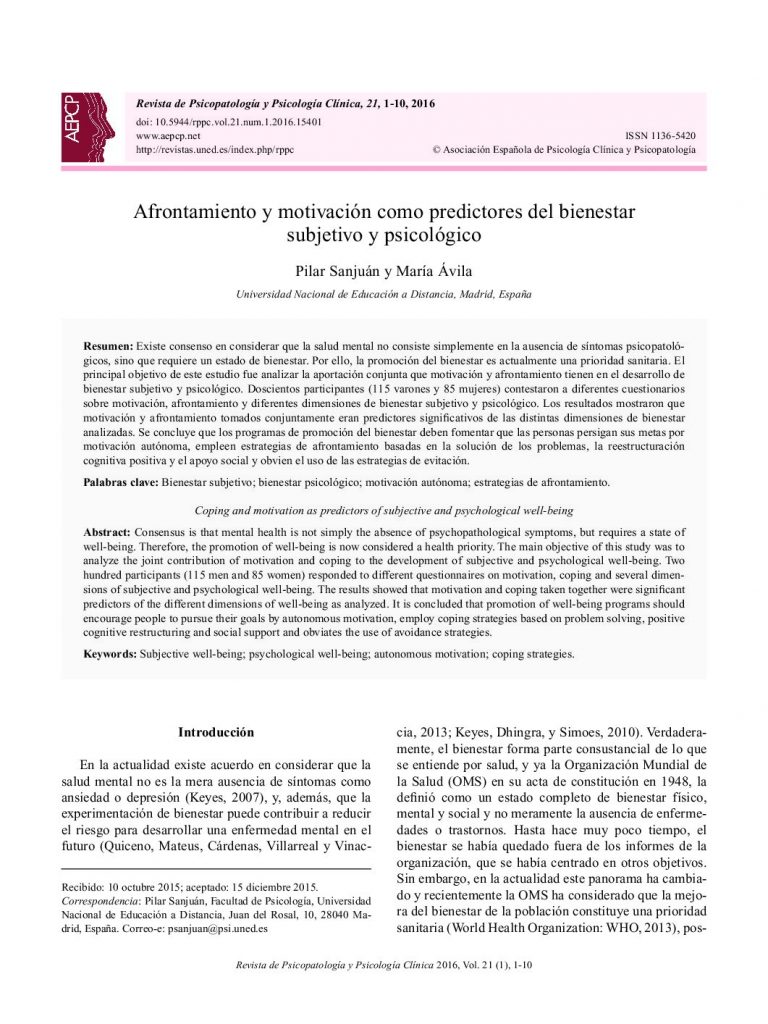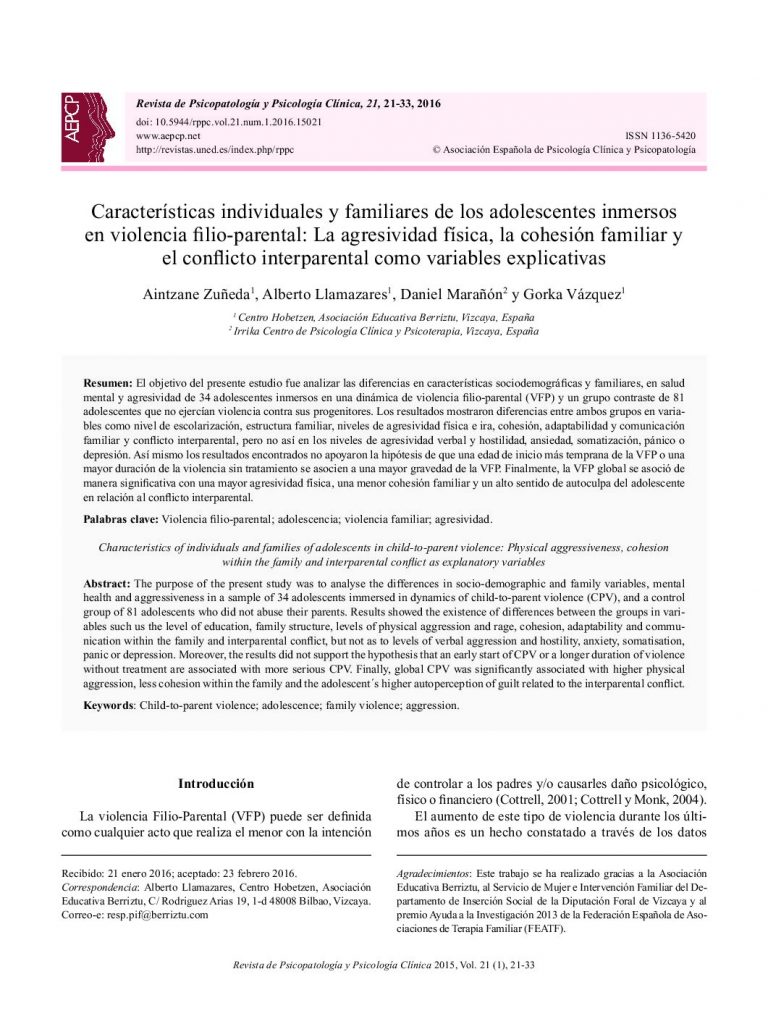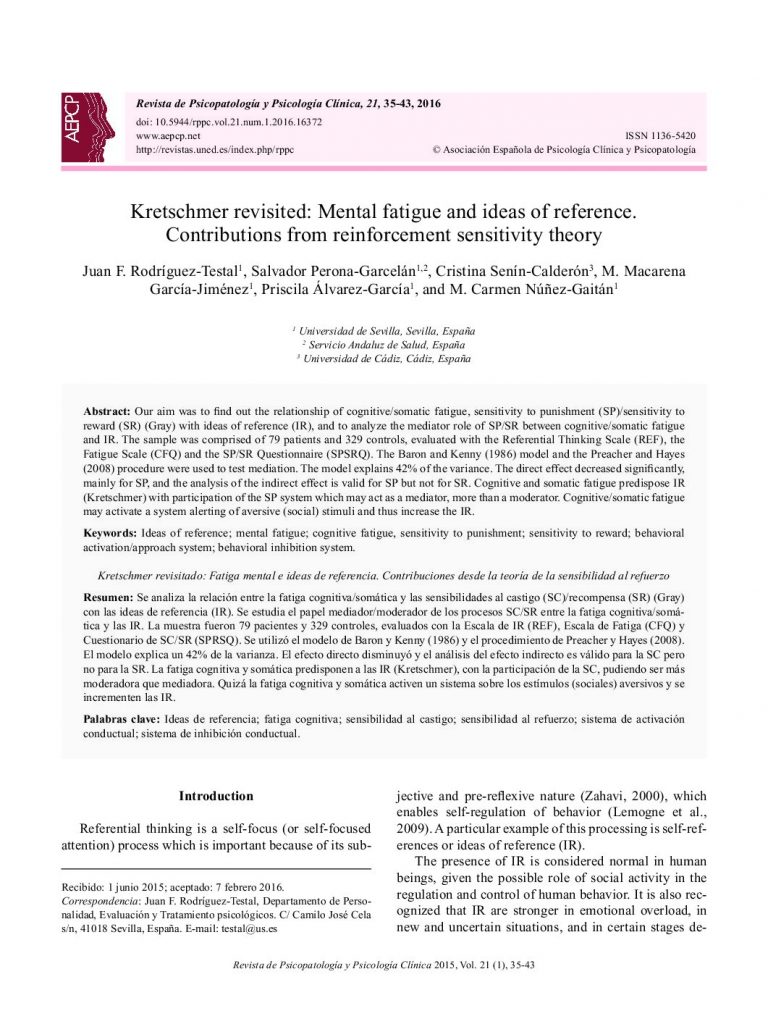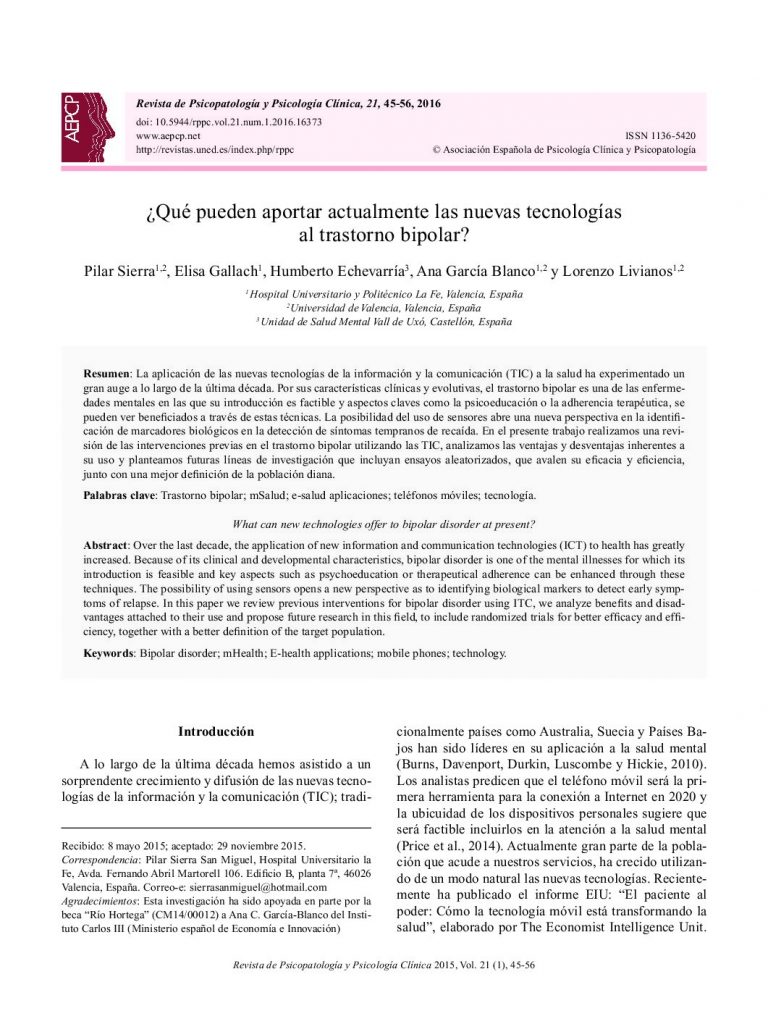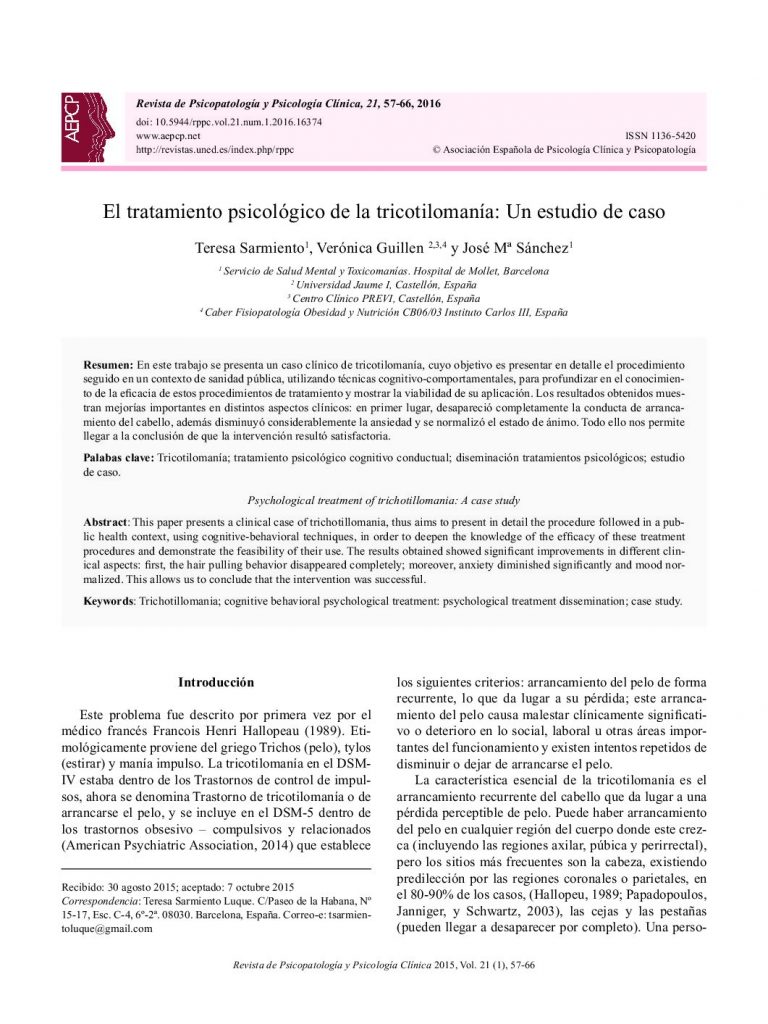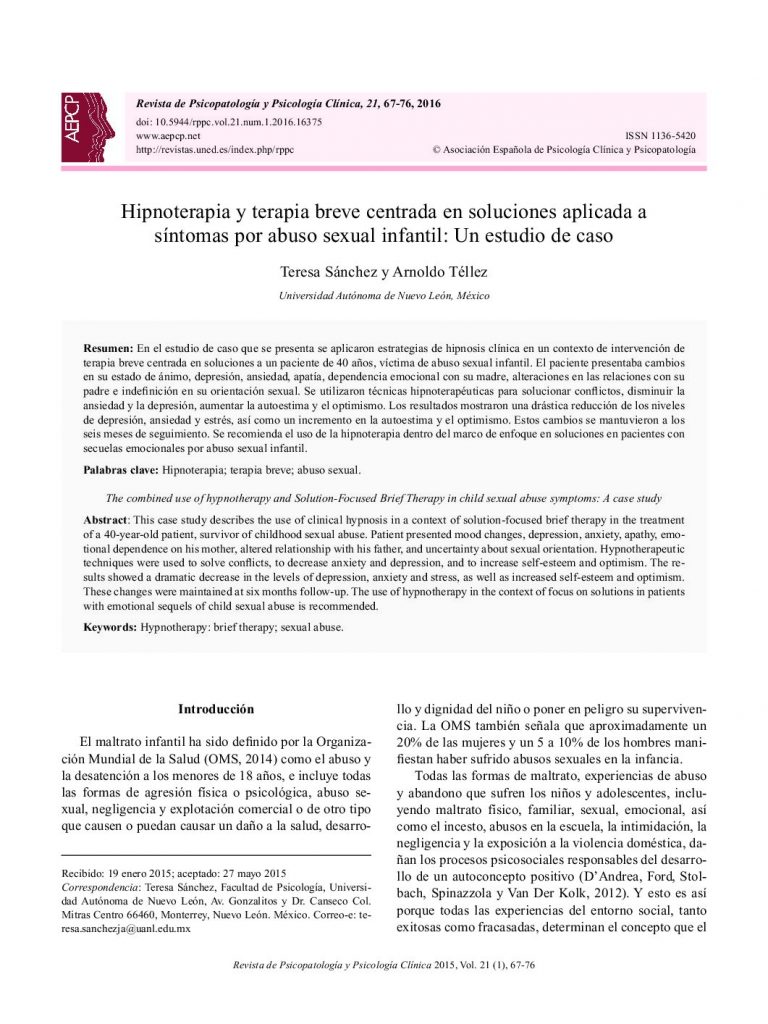Influencia de la sensibilidad a la ansiedad en una intervención psicológica para dejar de fumar.
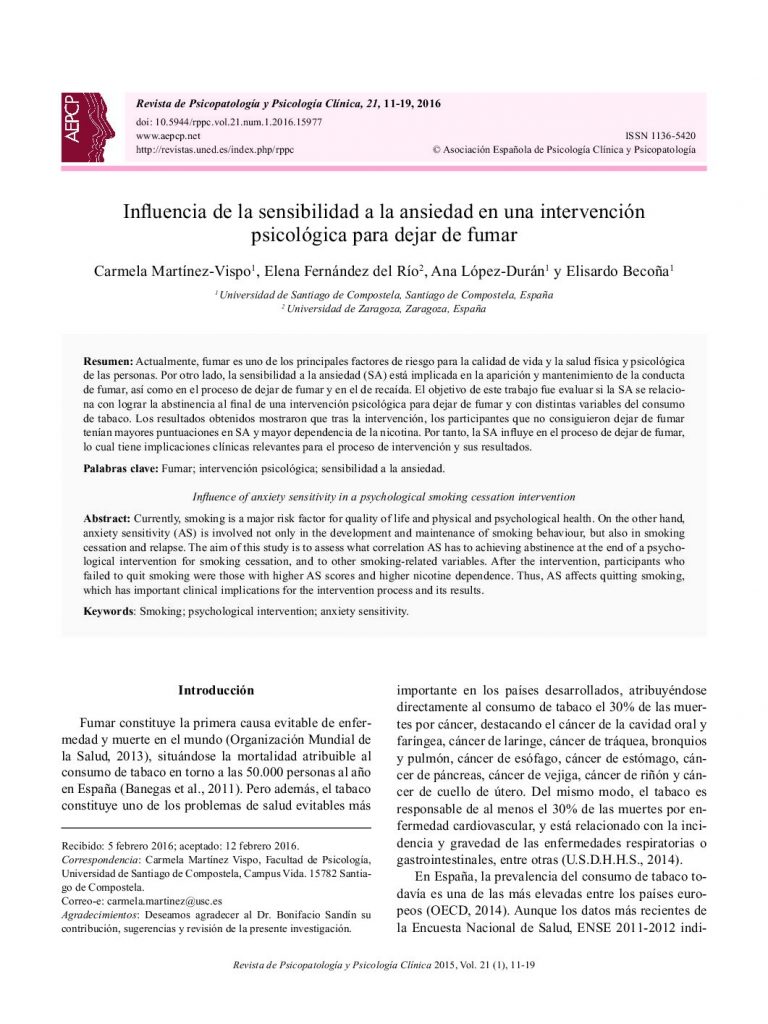
- Afrontamiento y motivación como predictores del bienestar subjetivo y psicológico.
- Influencia de la sensibilidad a la ansiedad en una intervención psicológica para dejar de fumar.
- Características individuales y familiares de los adolescentes inmersos en violencia filio-parental: la agresividad física, la cohesión familiar y el conflicto interparental como variables explicativas.
- Kretschmer revisited: Mental fatigue and ideas of reference: Contributions from Reinforcement Sensitivity Theory.
- ¿Que pueden aportar actualmente las nuevas tecnologías al trastorno bipolar?.
- El tratamiento psicológico de la tricotilomanía: Un estudio de caso.
- Hipnoterapia y terapia breve centrada en soluciones aplicadas a síntomas por abuso sexual infantil: Un estudio de caso.
Currently, smoking is a major risk factor for quality of life and physical and psychological health. On the other hand, anxiety sensitivity (AS) is involved not only in the development and maintenance of smoking behaviour, but also in smoking cessation and relapse. The aim of this study is to assess what correlation AS has to achieving abstinence at the end of a psycho- logical intervention for smoking cessation, and to other smoking-related variables. After the intervention, participants who failed to quit smoking were those with higher AS scores and higher nicotine dependence. Thus, AS affects quitting smoking, which has important clinical implications for the intervention process and its results.
Actualmente, fumar es uno de los principales factores de riesgo para la calidad de vida y la salud física y psicológica de las personas. Por otro lado, la sensibilidad a la ansiedad (SA) está implicada en la aparición y mantenimiento de la conducta de fumar, así como en el proceso de dejar de fumar y en el de recaída. El objetivo de este trabajo fue evaluar si la SA se relacio- na con lograr la abstinencia al final de una intervención psicológica para dejar de fumar y con distintas variables del consumo de tabaco. Los resultados obtenidos mostraron que tras la intervención, los participantes que no consiguieron dejar de fumar tenían mayores puntuaciones en SA y mayor dependencia de la nicotina. Por tanto, la SA influye en el proceso de dejar de fumar, lo cual tiene implicaciones clínicas relevantes para el proceso de intervención y sus resultados.



